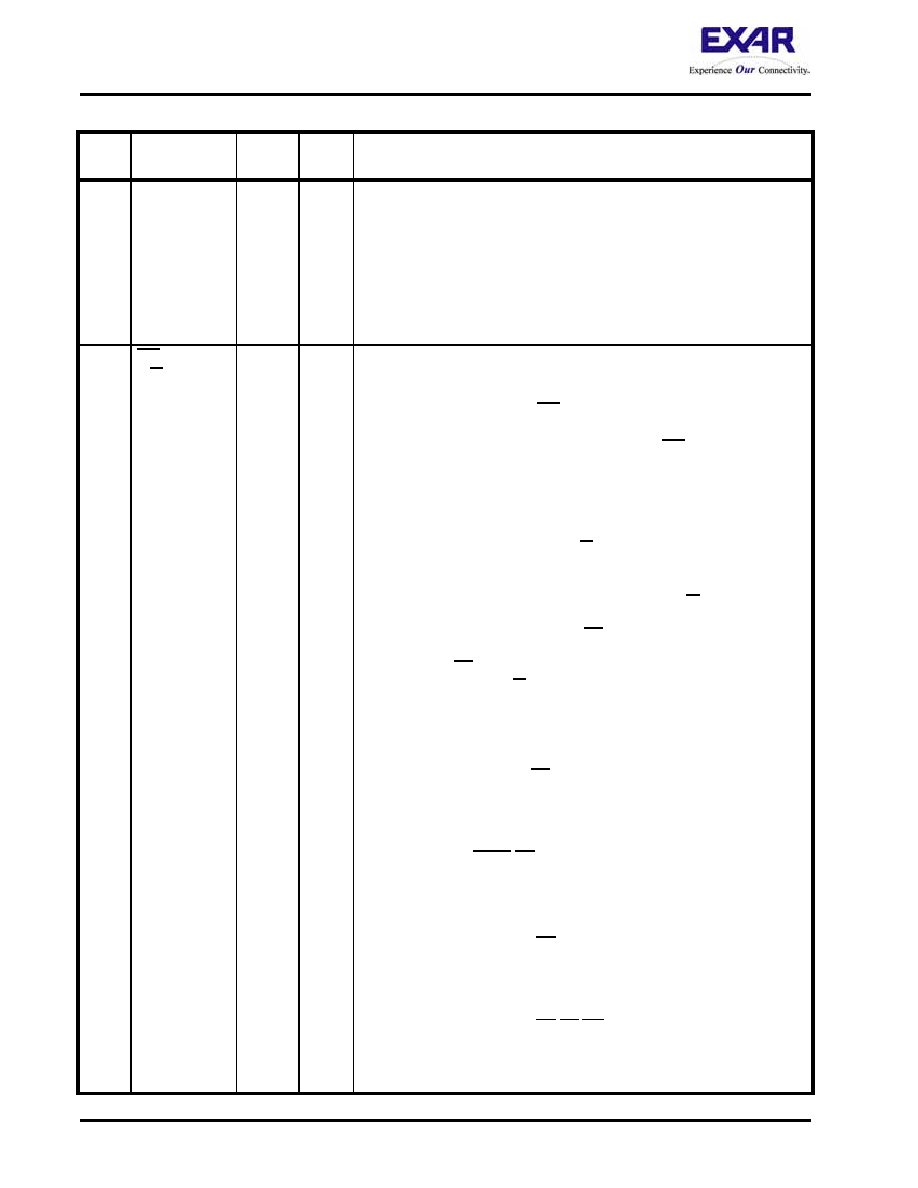- 您現(xiàn)在的位置:買賣IC網 > PDF目錄11766 > XRT94L43IB (Exar Corporation)IC MAPPER SONET/SDH OC12 516BGA PDF資料下載
參數資料
| 型號: | XRT94L43IB |
| 廠商: | Exar Corporation |
| 文件頁數: | 57/328頁 |
| 文件大小: | 0K |
| 描述: | IC MAPPER SONET/SDH OC12 516BGA |
| 標準包裝: | 24 |
| 應用: | 網絡切換 |
| 接口: | 總線 |
| 電源電壓: | 2.5V, 3.3V |
| 封裝/外殼: | 516-BBGA |
| 供應商設備封裝: | 516-PBGA(35x35) |
| 包裝: | 托盤 |
| 安裝類型: | 表面貼裝 |
第1頁第2頁第3頁第4頁第5頁第6頁第7頁第8頁第9頁第10頁第11頁第12頁第13頁第14頁第15頁第16頁第17頁第18頁第19頁第20頁第21頁第22頁第23頁第24頁第25頁第26頁第27頁第28頁第29頁第30頁第31頁第32頁第33頁第34頁第35頁第36頁第37頁第38頁第39頁第40頁第41頁第42頁第43頁第44頁第45頁第46頁第47頁第48頁第49頁第50頁第51頁第52頁第53頁第54頁第55頁第56頁當前第57頁第58頁第59頁第60頁第61頁第62頁第63頁第64頁第65頁第66頁第67頁第68頁第69頁第70頁第71頁第72頁第73頁第74頁第75頁第76頁第77頁第78頁第79頁第80頁第81頁第82頁第83頁第84頁第85頁第86頁第87頁第88頁第89頁第90頁第91頁第92頁第93頁第94頁第95頁第96頁第97頁第98頁第99頁第100頁第101頁第102頁第103頁第104頁第105頁第106頁第107頁第108頁第109頁第110頁第111頁第112頁第113頁第114頁第115頁第116頁第117頁第118頁第119頁第120頁第121頁第122頁第123頁第124頁第125頁第126頁第127頁第128頁第129頁第130頁第131頁第132頁第133頁第134頁第135頁第136頁第137頁第138頁第139頁第140頁第141頁第142頁第143頁第144頁第145頁第146頁第147頁第148頁第149頁第150頁第151頁第152頁第153頁第154頁第155頁第156頁第157頁第158頁第159頁第160頁第161頁第162頁第163頁第164頁第165頁第166頁第167頁第168頁第169頁第170頁第171頁第172頁第173頁第174頁第175頁第176頁第177頁第178頁第179頁第180頁第181頁第182頁第183頁第184頁第185頁第186頁第187頁第188頁第189頁第190頁第191頁第192頁第193頁第194頁第195頁第196頁第197頁第198頁第199頁第200頁第201頁第202頁第203頁第204頁第205頁第206頁第207頁第208頁第209頁第210頁第211頁第212頁第213頁第214頁第215頁第216頁第217頁第218頁第219頁第220頁第221頁第222頁第223頁第224頁第225頁第226頁第227頁第228頁第229頁第230頁第231頁第232頁第233頁第234頁第235頁第236頁第237頁第238頁第239頁第240頁第241頁第242頁第243頁第244頁第245頁第246頁第247頁第248頁第249頁第250頁第251頁第252頁第253頁第254頁第255頁第256頁第257頁第258頁第259頁第260頁第261頁第262頁第263頁第264頁第265頁第266頁第267頁第268頁第269頁第270頁第271頁第272頁第273頁第274頁第275頁第276頁第277頁第278頁第279頁第280頁第281頁第282頁第283頁第284頁第285頁第286頁第287頁第288頁第289頁第290頁第291頁第292頁第293頁第294頁第295頁第296頁第297頁第298頁第299頁第300頁第301頁第302頁第303頁第304頁第305頁第306頁第307頁第308頁第309頁第310頁第311頁第312頁第313頁第314頁第315頁第316頁第317頁第318頁第319頁第320頁第321頁第322頁第323頁第324頁第325頁第326頁第327頁第328頁

XRT94L43
9
SONET/SDH OC-12 TO 12XDS3/E3 MAPPER
REV. 1.0.2
T22
R22
U24
R21
W26
T25
R25
R26
PDATA_0
PDATA_1
PDATA_2
PDATA_3
PDATA_4
PDATA_5
PDATA_6
PDATA_7
I/O
TTL
Bi-Directional Data Bus Pins (Microprocessor Interface):
These pins are used to drive and receive data over the bi-directional data
bus,, whenever the Microprocessor performs READ or WRITE operations
with the Microprocessor Interface of the XRT94L43.
Y26
WR/
R/W
I
TTL
Write Strobe/Read-Write operation Identifier:
The function of this input pin depends upon which mode the Microproces-
sor Interface has been configured to operate in.
Intel-Asynchronous Mode - WR - Write Strobe Input:
If the Microprocessor Interface is configured to operate in the Intel-Asyn-
chronous Mode, then this input pin functions as the WR (Active Low WRITE
Strobe) input signal from the Microprocessor. Once this active-low signal is
asserted, then the input buffers (associated with the Bi-Directional Data
Bus pin, D[7:0]) will be enabled. The Microprocessor Interface will latch the
contents on the Bi-Directional Data Bus (into the "target" register or address
location, within the XRT94L43) upon the rising edge of this input pin.
Motorola-Asynchronous Mode - R/W - Read/Write Operation Identifi-
cation Input Pin:
If the Microprocessor Interface is operating in the "Motorola-Asynchronous
Mode", then this pin is functionally equivalent to the "R/W" input pin. In the
Motorola Mode, a "READ" operation occurs if this pin is held at a logic "1",
coincident to a falling edge of the RD/DS (Data Strobe) input pin. Similarly
a WRITE operation occurs if this pin is at a logic "0", coincident to a falling
edge of the RD/DS (Data Strobe) input pin.
Power PC 403 Mode - R/W - Read/Write Operation Identification Input:
If the Microprocessor Interface is configured to operate in the Power PC
403 Mode, then this input pin will function as the "Read/Write Operation
Identification Input" pin.
Anytime the Microprocessor Interface samples this input signal at a logic
low (while also sampling the CS input pin "low") upon the rising edge of
PCLK, then the Microprocessor Interface will (upon the very same rising
edge of
PCLK) latch the contents of the Address Bus (A[15:0]) into the
Microprocessor Interface circuitry, in preparation for this forthcoming READ
operation. At some point (later in this READ operation) the Microprocessor
will also assert the DBEN/OE input pin, and the Microprocessor Interface
will then place the contents of the "target" register (or address location
within the XRT94L43) upon the Bi-Directional Data Bus pins (D[7:0]), where
it can be read by the Microprocessor .
Anytime the Microprocessor Interface samples this input signal at a logic
high (while also sampling the CS input pin a logic "low") upon the rising
edge of
PCLK, then the Microprocessor Interface will (upon the very same
rising edge of
PCLK) latch the contents of the Address Bus (A[15:0]) into
the Microprocessor Interface circuitry, in preparation for the forthcoming
WRITE operation. At some point (later in this WRITE operation) the Micro-
processor will also assert the RD/DS/WE input pin, and the Microprocessor
Interface will then latch the contents of the Bi-Directional Data Bus (D[7:0])
into the contents of the "target" register or buffer location (within the
XRT94L43).
MICROPROCESSOR INTERFACE
PIN #SIGNAL NAME
I/O
SIGNAL
TYPE
DESCRIPTION
相關PDF資料 |
PDF描述 |
|---|---|
| VI-B4J-IW-F2 | CONVERTER MOD DC/DC 36V 100W |
| D38999/24FD19SB | CONN RCPT 19POS JAM NUT W/SCKT |
| XRT94L33IB | IC MAPPER DS3/E3/STS-1 504TBGA |
| VI-B4J-IW-F1 | CONVERTER MOD DC/DC 36V 100W |
| 5413558-1 | CONN JACK BNC RT ANG 75 OHM GOLD |
相關代理商/技術參數 |
參數描述 |
|---|---|
| XRT94L43IB-F | 功能描述:網絡控制器與處理器 IC Demapper RoHS:否 制造商:Micrel 產品:Controller Area Network (CAN) 收發(fā)器數量: 數據速率: 電源電流(最大值):595 mA 最大工作溫度:+ 85 C 安裝風格:SMD/SMT 封裝 / 箱體:PBGA-400 封裝:Tray |
| XRT94L55 | 制造商:EXAR 制造商全稱:EXAR 功能描述:SONET/SDH OC-48/STM-16, 4XOC-12/STM-4, 16XOC-3/STM-1 FRAMER/CONCENTRATOR WITH INTEGRATED CDR’S |
| XRT94L55IV | 制造商:EXAR 制造商全稱:EXAR 功能描述:SONET/SDH OC-48/STM-16, 4XOC-12/STM-4, 16XOC-3/STM-1 FRAMER/CONCENTRATOR WITH INTEGRATED CDR’S |
| XRT95L34 | 制造商:EXAR 制造商全稱:EXAR 功能描述:OC-12/STM-4, QUAD OC-3/STM-1 POS/ATM FRAMER WITH INTEGRATED CDR’S |
| XRT95L34IV | 制造商:EXAR 制造商全稱:EXAR 功能描述:OC-12/STM-4, QUAD OC-3/STM-1 POS/ATM FRAMER WITH INTEGRATED CDR’S |
發(fā)布緊急采購,3分鐘左右您將得到回復。